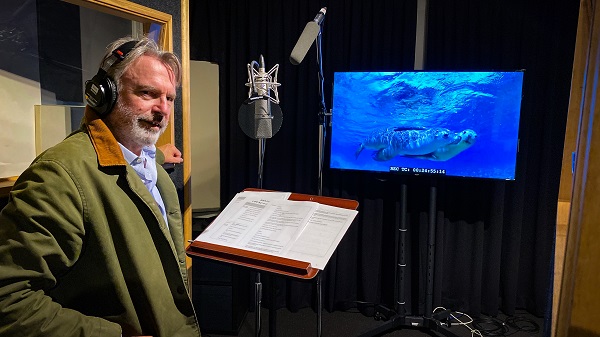It’s fitting that as director Paul Phelan speaks to us from the windswept, idyllic west coast of Ireland, decompressing with his family between film projects, one of his children will soon leave the nest. “Sea Lions: Life by a Whisker,” his newest nature film showing inside the Houston Museum of Natural Science’s Wortham Giant Screen Theatre, features a similar tale as an Australian sea lion pup finds her way along the country’s southern cliffs.

Phelan and co-director Amelia McCarten have crafted a majestic experience for viewers, spending mere weeks at the bottom of the Earth to capture a slice of life rarely seen. At just around an hour’s running time, it’s a quick but splendid trip Down Under.
Alongside a small crew, Phelan and McCarten were able to camp near the sea lions, where humans aren’t usually able to stay. And since they would be staying on sacred aboriginal lands, they were accompanied by a guide to ensure nature was protected at all times. Sometimes the crews on remote nature films are as small as four people, with everyone pulling double-duty. Getting the equipment on the cliffs was a challenge in itself. “You have to wade the gear in and wait for something to happen,” Phelan says. Patience, as always, is critical.
Crews also have to be a bit more surgical with IMAX movies because of the cost of the equipment. “Nature is on its own schedule,” Phelan notes. “It doesn’t care about your spreadsheet or shot list. We’re quite close and intimate with the subjects. You have to be patient and slowly approach them.”

Heavy-duty IMAX cameras don’t allow for long-range shots, so proximity is paramount. For a subject like the sea lion, where the females are especially protective of their offspring, it takes time for them to understand the crew isn’t a threat. Instead, they, like many in the nature film community these days, utilized cost-effective drones to capture footage that was once only accessible using invasive helicopters. “We are on their turf,” Phelan adds.
A veteran of children’s nature shows, Phelan says that you can’t help but grow attached to your animal subjects. “There’s a constant battle in the nature film community about anthropomorphizing wild animals,” Phelan says. “You want your audience to have emotional ties to them.”
Sea Lions convey the same range of emotion we do, he says, noting that Australian sea lions are an endangered species, their population having fallen by more than 60% in the last four decades. “You have to be pretty cold to not feel emotions around them,” he adds.
Instead, it’s about using that feeling to create an approachable film for the whole family that also speaks to older viewers about conservation. Since its 2020 debut, “Sea Lions” has brought awareness to Australian efforts to protect sea lions and other marine mammals. “Animals don’t have a voice,” Phelan says. “Telling their stories can save them. We share the planet with them. We need to guard these treasures for our kids and their kids, too.”

He’s also hoping that he and his colleagues inspire a new generation of conservationists. Plus, there’s a touch of pop culture nostalgia tucked in there for keen ears; renowned thespian Sam Neill, whom Phelan describes as “a big nature lover,” has provided the narration for “Sea Lions,” adding a patina of warmth and care to the film.
Now back from the Australian coast, Phelan is currently ramping up production on his next film detailing the lives of butterflies and pollinators. He’s excited to explore the world of these indispensable creatures who he says carry the world’s future on their backs. Who knows, maybe HMNS could be coming to the giant screen someday. “The Cockrell Butterfly Center your museum has looks fantastic,” the director adds.
Our doors are always open, Mr. Phelan.
Check out the official Sea Lions – Life by a Whisker trailer and find showtimes and tickets here.
Related Readings:
Read about The Houston Wildlife Urban Project and find out how you can get involved in efforts to research and help preserve local wildlife.






